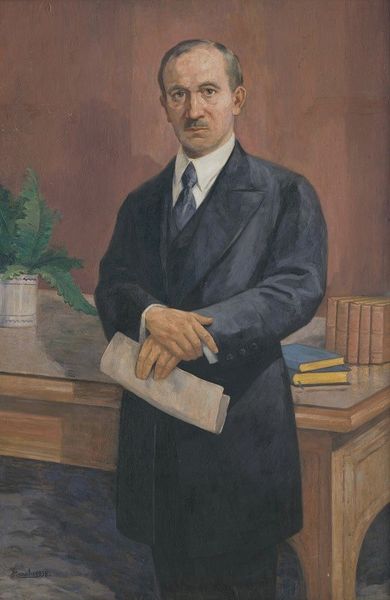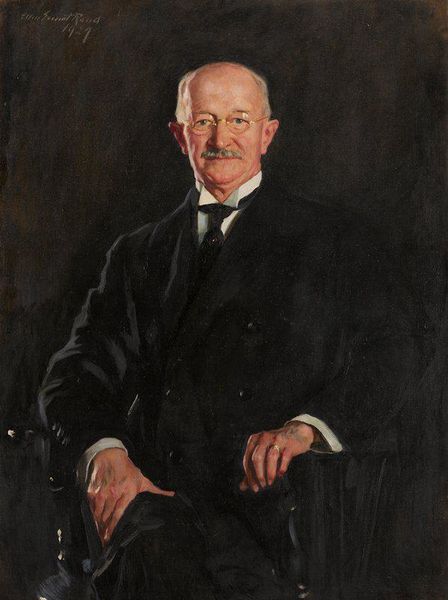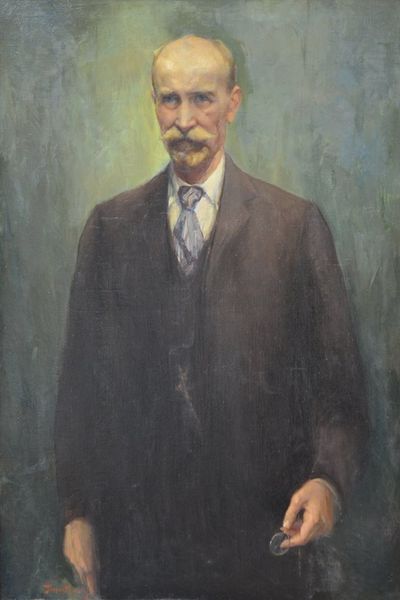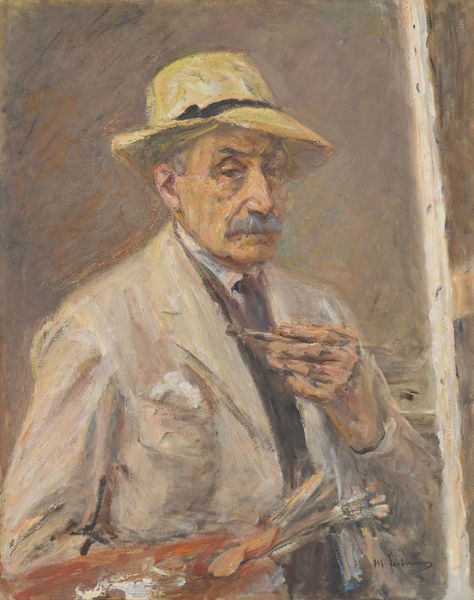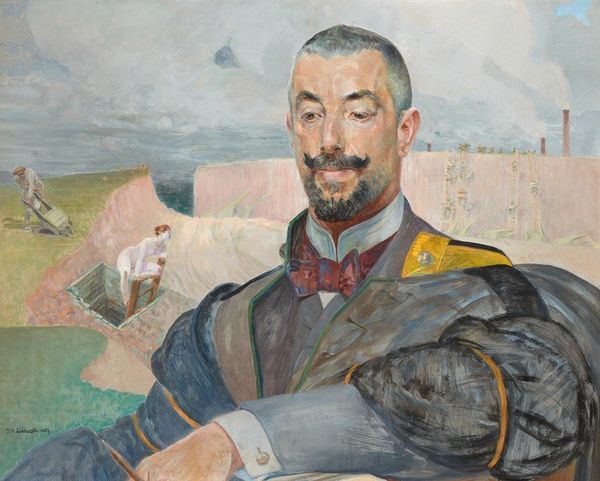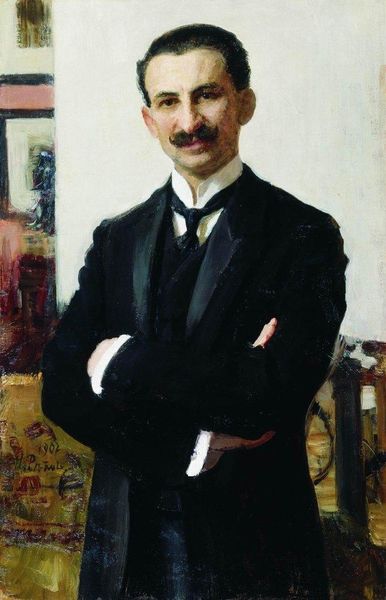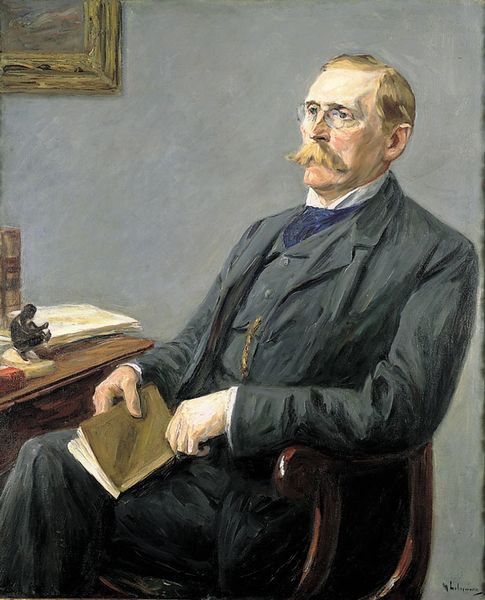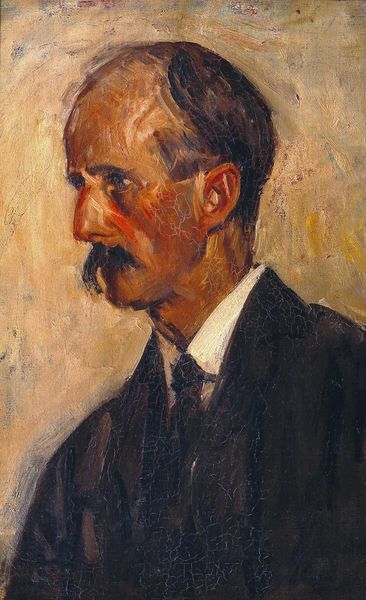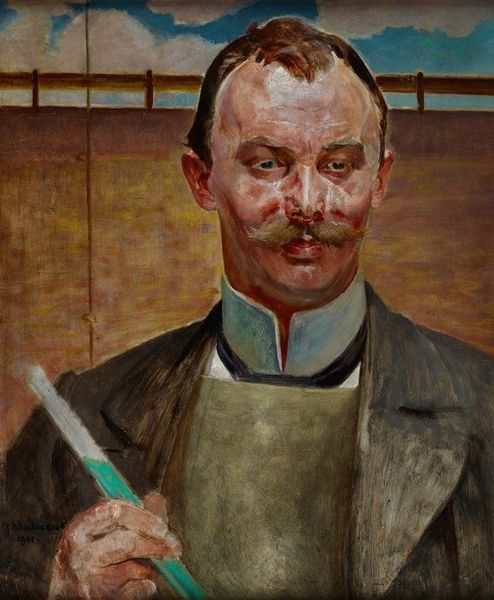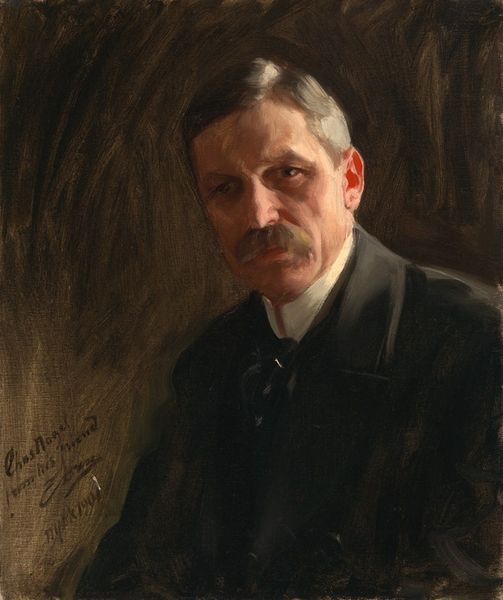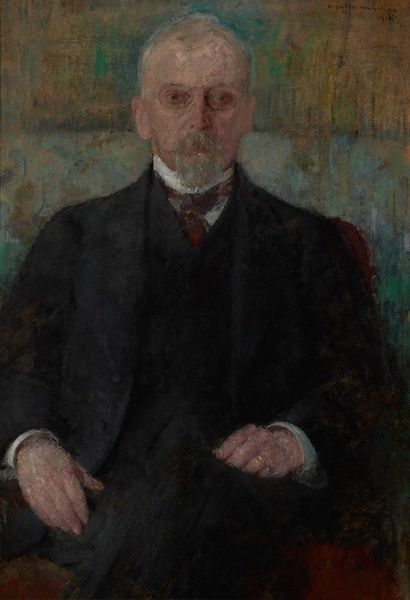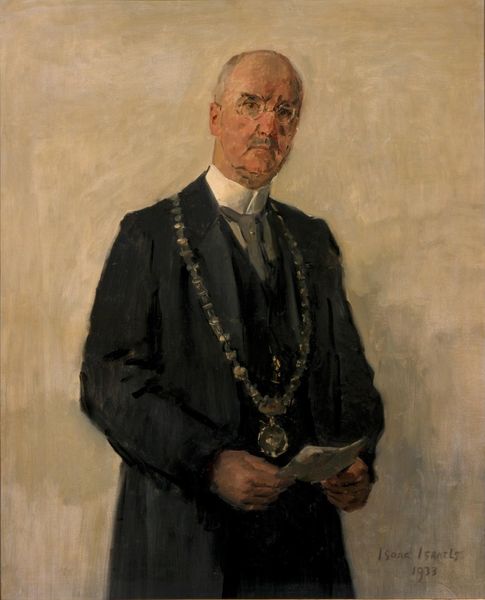
Copyright: Public Domain: Artvee
Curator: Today, we're looking at Jacek Malczewski's "Portrait of Józef Sare, Vice-President of the City of Krakow," painted in 1913. It’s an oil on canvas work that presents Sare in a formal, almost stately manner. Editor: My first impression? Intriguing melancholy. There's something in Sare's gaze, and the muted tones overall, that speaks of a certain pensiveness despite the evident wealth and status depicted. Curator: I agree. The somber color palette is rather key. It provides a strong foundation for understanding the formal elements—the careful modeling of form through light and shadow. Also, note how Malczewski employs contrasting textures in Sare’s skin and in the details of the costume, calling into question painting’s traditional approach to representation. Editor: But the industrial landscape peeking out behind him can’t be ignored. It's jarring, this blend of tradition –the portrait itself–with burgeoning industrialization. Sare, holding what appears to be a symbolic worm or sprout, seems caught between the old world and the new. A reflection perhaps, of Poland grappling with its own future amidst rapid change and geopolitical instability? Curator: That is a compelling socio-political interpretation! Yet, focusing on solely on this limits its reading. The symbolic creature he is holding, along with other less identifiable elements within the picture plane, disrupt any easy categorization of this as purely Realist or Impressionistic. Editor: It certainly pushes at the edges. Given the broader Symbolist context of Malczewski’s work, it wouldn’t be wrong to read this as a meditation on Krakow’s transformation under Sare’s leadership—a commentary on the promise, or even the threat, of progress. Did this expansion benefit all, or primarily entrench existing powers? Curator: What truly grabs me is Malczewski's bold compositional balance, which brings forward both traditional conventions and novel techniques. He achieves this through nuanced use of light and color which demands an attentive beholder. The color palette is restricted and this pushes forward its formalism. Editor: This piece offers a reminder that portraits are seldom just about capturing likeness. They are stories, arguments, and invitations to delve deeper. Curator: I couldn't agree more, seeing in it both an image and an invitation.
Comments
No comments
Be the first to comment and join the conversation on the ultimate creative platform.
